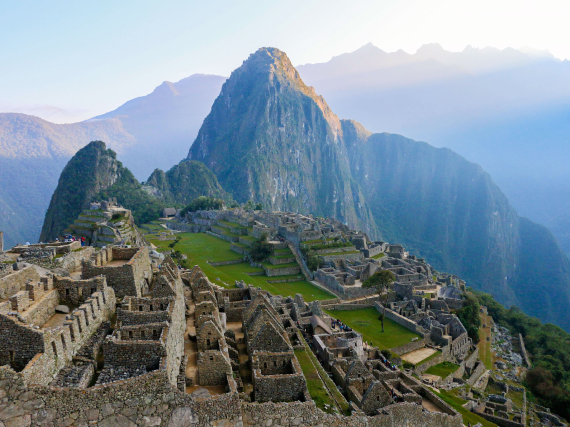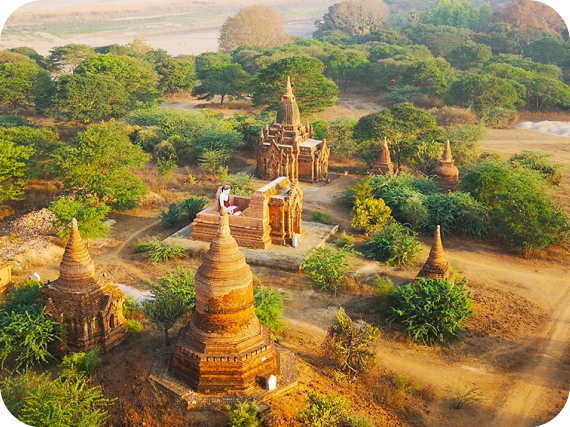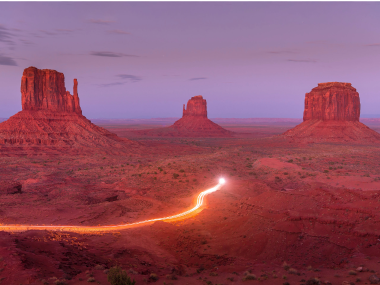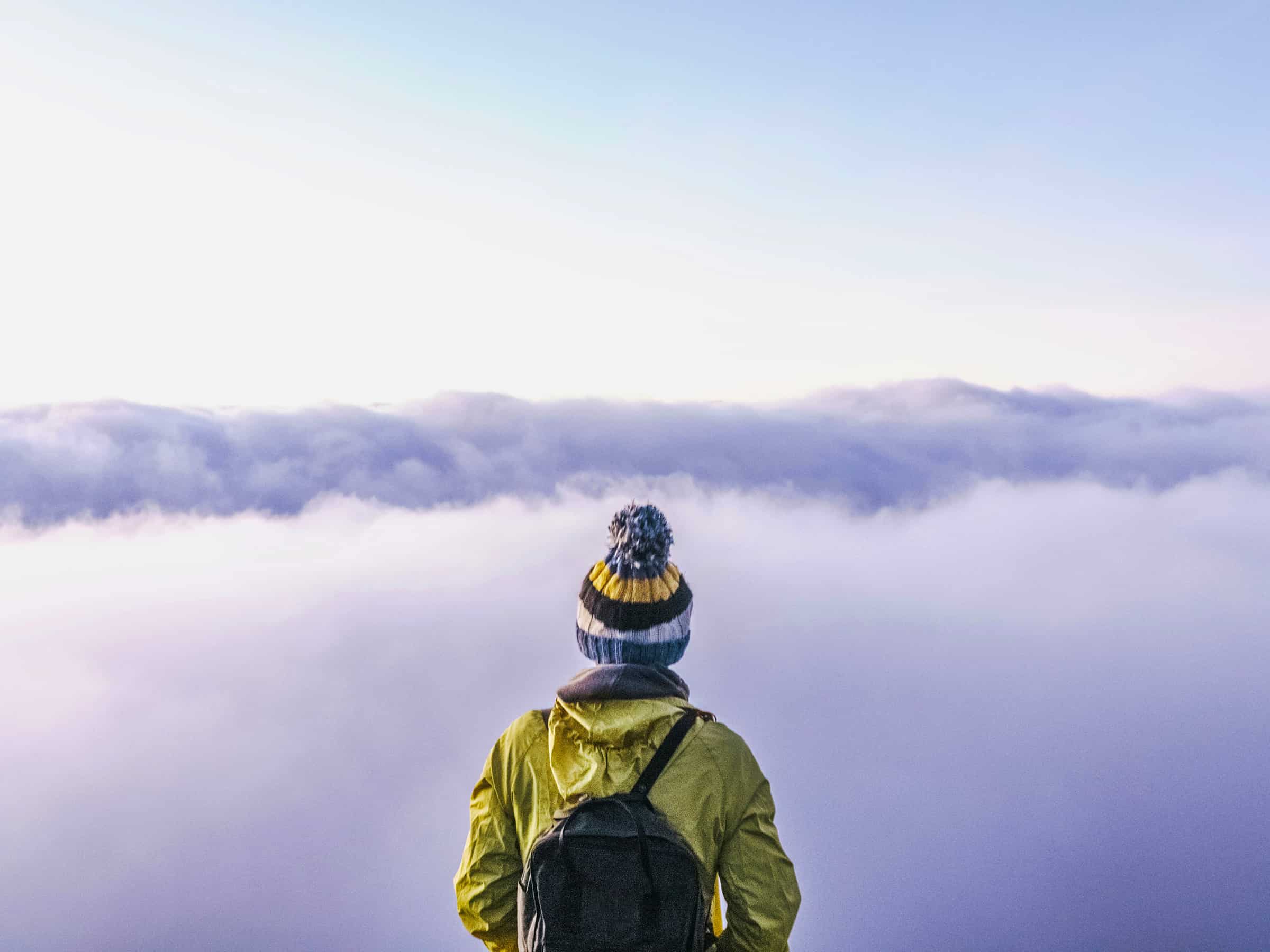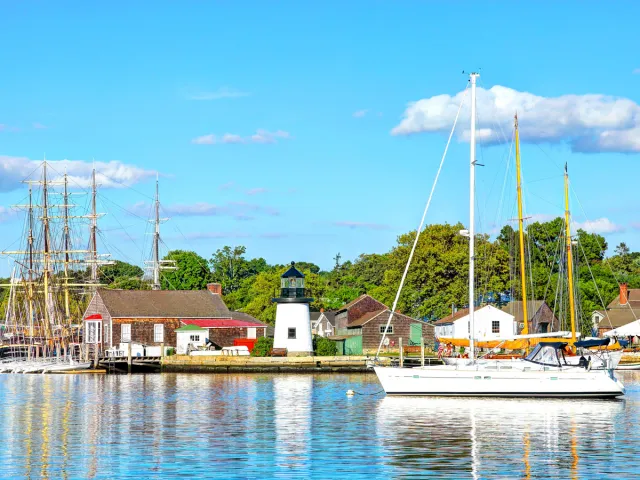If Japan is at the top of your travel wish list, you’ll be in good company: The country recently set an all-time tourism record, with 36.9 million international visitors in 2024. While those numbers were fueled, in part, by the weak yen as of late, it’s easy to understand the enduring appeal of Japan for travelers. Home to ancient temples, stunning mountains, and vibrant cities — including the largest one in the world — Japan is a place that beckons travelers back, time and again. Whether it’s your first time or fifth visit, make sure you’ve crossed these 10 beautiful places in Japan off your list.
Arashiyama Bamboo Grove
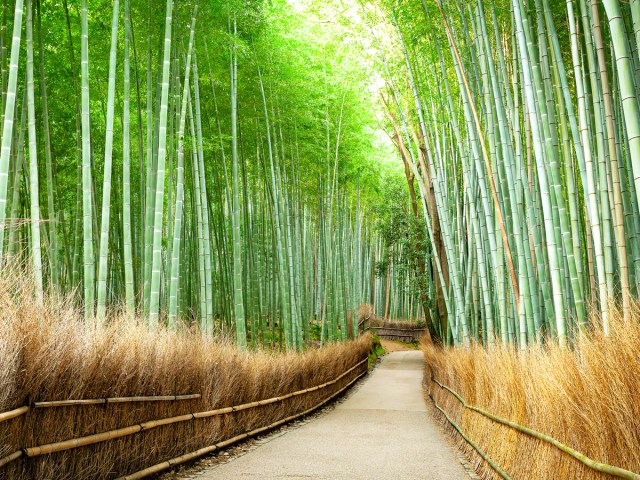
Despite being one of the most photographed locations in Japan, Arashiyama Bamboo Grove is one of those rare spots that photos don’t do justice. There is something magical, even otherworldly about walking through this space as sunlight filters through towering bamboo stalks on either side of you — all the more remarkable considering that it’s only about 30 minutes from central Kyoto.
The walking path that winds through the forest is sure to be crowded when you enter, but the further you venture into the bamboo grove, the more secluded the experience becomes. It isn’t just a visually arresting journey, either: The actual sound of the bamboo swaying in the wind is so distinct and serene that the Japanese Ministry of Environment has declared it one of the 100 Protected Soundscapes of Japan.
You can complete a walking tour of the forest in around an hour, but a leisurely pace and visits to nearby Tenryu-ji Temple and Kameyama-koen Park can easily make your visit to Arashiyama last several hours. As for the best time to make the trip, that’s entirely up to you — the bamboo grove is open 24/7 and admission is free.
Shirakawa-go
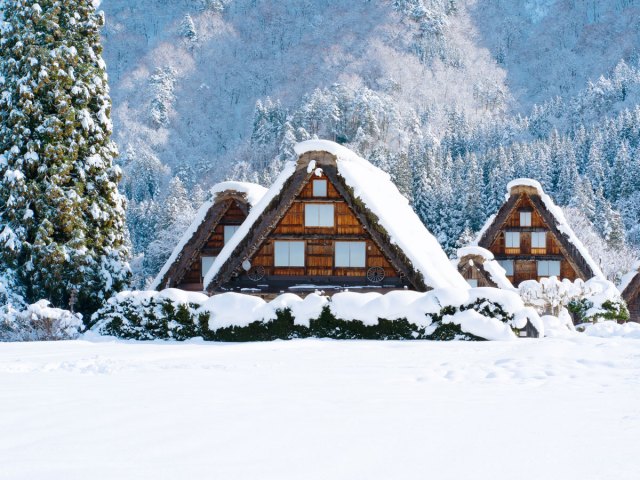
On Japan’s largest and most populous island of Honshu, but far from the bright lights and bustle of Tokyo, visitors can find a fairy-tale example of rustic, rural Japan in Shirakawa-go. In this tranquil and remote mountain region, the traditional architecture is designed to easily shed the many feet of heavy and wet snow that fall each winter. Featuring steeply pitched thatched roofs, these gasshō-zukuri homes are both practical and incredibly picturesque.
The historic villages of Shirakawa-go and Gokayama comprise one of Japan’s UNESCO World Heritage Sites, with 170 valley acres encompassing land in both the Gifu and Toyama provinces. Find one of the best views at the Samurai-era Ogimachi Castle, which offers a panoramic outlook over Shirakawa-go. Afterward, don’t miss a rejuvenating soak at one of the region’s many famed onsen — the baths fed by natural hot springs are thought to have restorative powers.
Miyajima
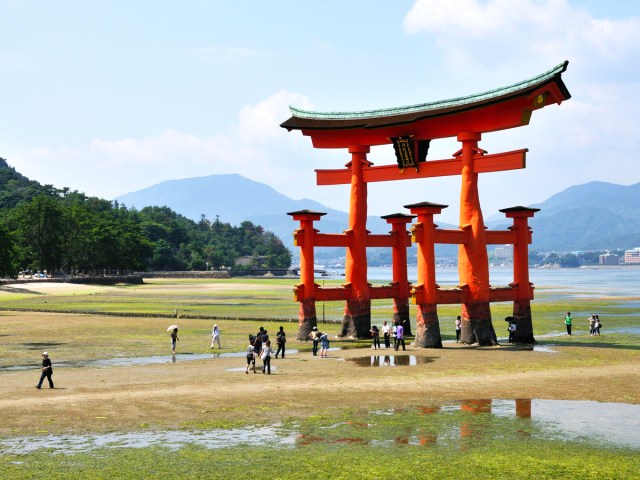
The Japanese archipelago is no stranger to odd populations. From the cats of Aoshima Island to the rabbits of Ōkunoshima, it seems there’s an island dedicated to every kind of fuzzy animal. Set in Hiroshima Bay, the island of Miyajima (also known as Itsukushima) is known for its population of over 1,000 Sika deer who cohabitate peacefully alongside humans.
Utterly indifferent to the humans around them, the spotted deer congregate in parks, on sidewalks, and around many of the island’s tourist attractions. Their thriving existence is thanks to the traditional Shinto belief that deer are spiritual messengers from the gods, so they have been protected by local ordinances for decades.
But the deer aren’t the only reason to visit Miyajima. The island is perhaps best known for its shrines (Miyajima actually translates to “Shrine Island”), including the UNESCO-protected Itsukushima Shrine, which dates to the 12th century. You can’t miss its famous “floating” torii gate, which at high tide appears to jut straight out of the water. Visitors can explore the shrine’s beautiful grounds, accompanied by the island’s friendly deer, to snap the perfect photo of the heavenly gate.
Hemeji Castle

One of the most famous castles in Japan, Himeji Castle spans 24,000 square feet and rises 152 feet into the skies above this central Japanese city of the same name. UNESCO calls it “the finest surviving example of early 17th-century Japanese castle architecture” and “a masterpiece of construction in wood.”
The castle — nicknamed the “White Heron Castle” for its size and color — was originally built in 1346. Himeji was continuously enlarged over the centuries by the ruling clans who occupied it. At one point, the grounds featured three moats for maximum protection. In true Japanese fashion, the castle lawn is filled with cherry trees — now that it’s open to the public, it’s a popular place to view the cherry blossoms during spring.
Hitachi Seaside Park
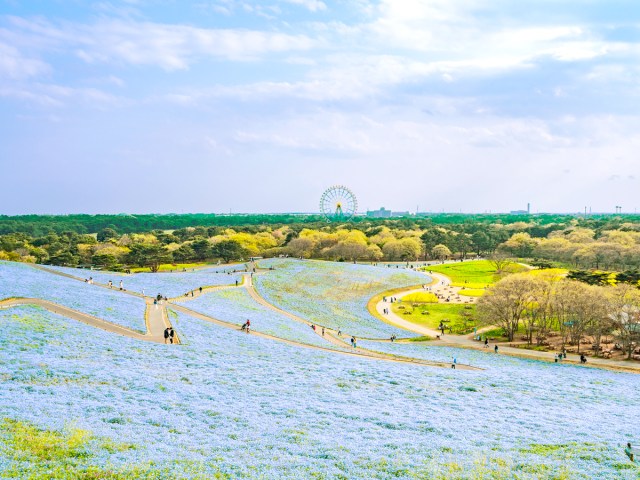
You don’t have to be floral-obsessed to appreciate the vibrant, perpetually-in-bloom beauty of Hitachi Seaside Park, but it certainly helps. Spanning 865 acres just two hours northeast of Tokyo, the park is blanketed in endless fields of flowers that seem to stretch right into the surrounding sea.
Hitachi’s best-known bloom is the nemophila (or “baby blue eyes”), which drapes Miharashi Hill every spring in such a lively shade of blue, you’ll swear it sprang out of a picture book. But if you can’t make it in spring, autumn is just as arresting — the green kokia bushes turn a deep, brilliant red as temperatures drop. Year-round, everything from narcissuses and sunflowers to ice tulips and cosmos flowers also blossom in the park.
Florals aren’t the only feature of Hitachi Seaside Park, which is also home to more than 25 rides and attractions. Most famous among these is a Ferris wheel offering views of the Pacific Ocean and the city of Hitachinaka — and perhaps a peaceful new perspective on the continuous fields of flowers 200 feet below.
Iriomote Island
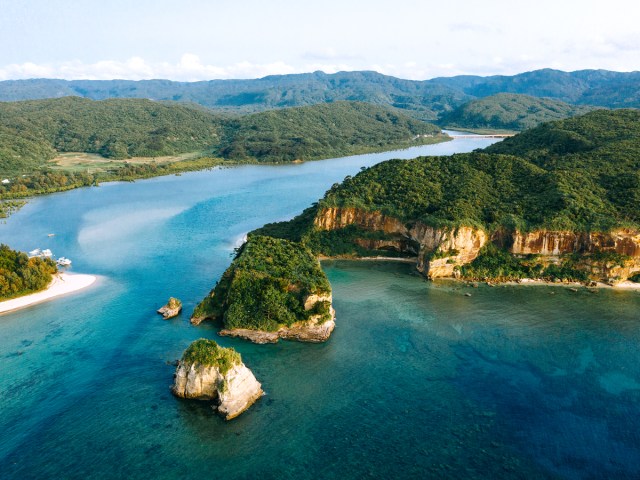
The very thing that makes this island most famous, at least in global conservation circles, is the one you’re least likely to see: the endangered Iriomote yamaneko, which lives only here, and in very small numbers. Beyond being incredibly rare, these mostly nocturnal little wildcats seldom show themselves by day — least of all around humans.
But even if you don’t manage a sighting, a visit to the smallest endemic habitat in the world to support wildcats — as this island is reputed to be — is still well worth the ferry trip over from Ishigaki (Japan’s southernmost city as well as the transportation hub of Okinawa’s Yaeyama Islands).
Once you’re on Iriomote, you’ll have your choice of wilderness adventures, as most of the densely jungled island is undeveloped, and much of it belongs to the Iriomote Ishigaki National Park. There’s excellent sea, river, and mangrove kayaking — plus fishing, snorkeling, and sometimes extreme hiking. And divers won’t want to leave the island without exploring Manta Way, where graceful rays congregate each spring and summer, proving infinitely less elusive than the island’s namesake feline.
Lake Mashu
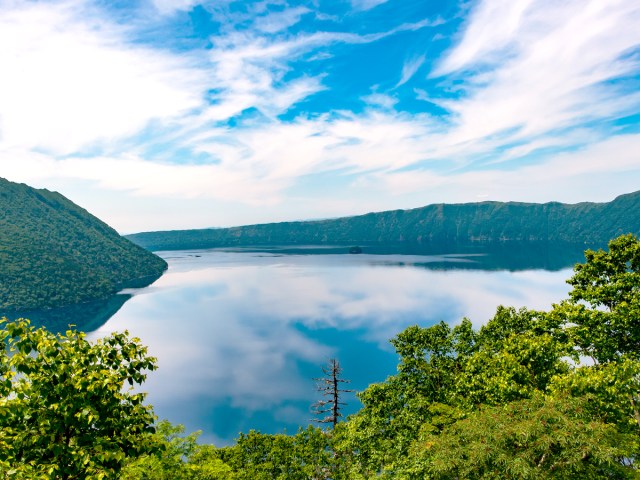
Though it’s frequently cited among the clearest lakes in the world, Japan’s Mashu-ko (in local parlance) is actually obscured much of the time — and that’s part of the pilgrimage site’s famed appeal. The dense fog that regularly blankets the surface of this caldera — one of three ancient volcanic crater lakes in Hokkaido’s Akan-Mashu National Park — only adds to the mystical beauty of a place long considered sacred by the Indigenous Ainu people, who also use the name “Kamuito,” or lake of the gods, in reference to this female spirit stronghold.
The lake itself is inaccessible to visitors (no boating, swimming, or fishing is allowed), but various viewing towers serve up sweeping vistas, as does the summit of Mount Mashu — the most dramatic of the viewpoints along the hiking trail on the lake’s eastern edge.
Nachi Waterfall
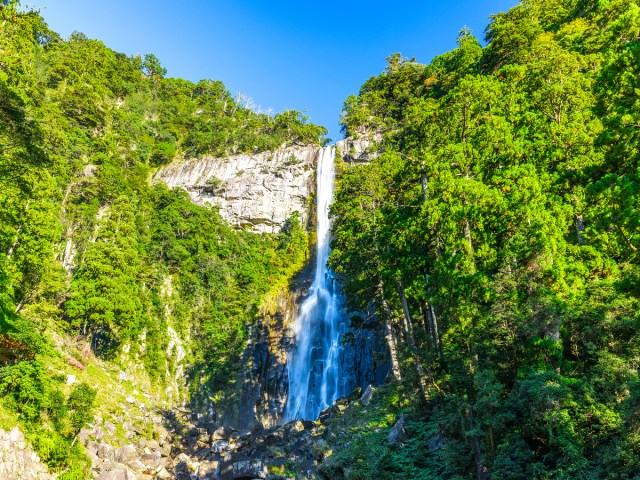
Despite being one of the tallest waterfalls in Japan, Nachi Waterfall lies off the beaten path for most tourists. This is largely due to the fact that the 436-foot-tall falls are in the Kii Mountain Range, making them difficult to reach. In order to see the plunging falls, travelers must commit to a four-hour drive or an eight-hour train ride from Osaka, plus additional bus routes to the remote site.
Once there, visitors, for a fee, can drink from the pool at the base of the waterfall to receive a long life with good fortune. The falls have long been considered a sacred place that predated organized religion, with locals worshipping the cascading water as a deity. Since then, Buddhist and Shinto shrines have been erected beneath the falls, surrounded by deciduous cedar trees and coexisting in harmony.
Akasawa Forest
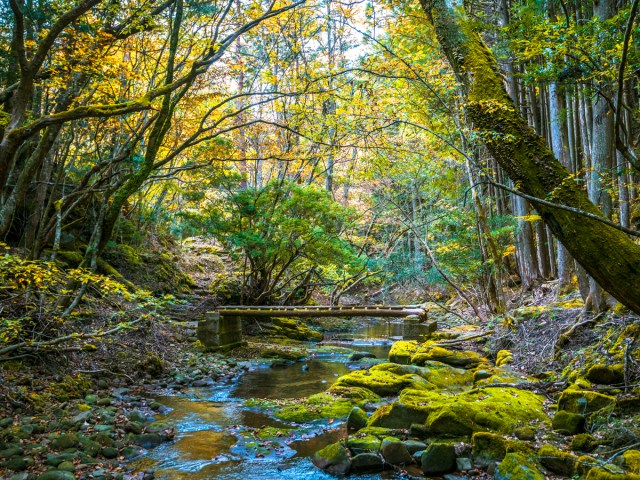
The birthplace of shinrin-yoku or “forest bathing” can be found in the dense woods of Akasawa National Recreation Forest within the Kiso Valley in the Japanese prefecture of Nagano. In 1982, Akasawa was the site of the first forest bathing event in the world. As an established mindfulness practice, forest bathing requires people to use all of their senses to observe their surroundings and connect with nature.
As the trees were logged during the Edo Period from 1603 until 1868, Akasawa is not an old-growth forest, but conservation practices have since turned it into one of the most beautiful woodlands in the country. With a mix of evergreen and cypress trees, Akasawa offers six hiking trails for walking or forest bathing, with numerous vistas and resting spots along the way. Another great way to see the forest is on Akasawa Forest Railway — the old logging railway used to haul timber that now carries tourists through the valley’s beautiful woodlands.
Mount Fuji

You’ll find Mount Fuji, the towering stratovolcano that boasts the highest peak in the country, on Honshu, the largest of Japan’s four main islands. While you can see the massive mountain from many locations throughout Japan, the closest city is Fujinomiya, which is located halfway between Tokyo and Kyoto.
Not only a popular site for recreation, Mount Fuji is one of Japan’s most iconic natural wonders, long a sacred site and source of artistic inspiration. It’s one of Japan’s three Holy Mountains (Mount Haju and Mount Tate finish off the triumvirate), a UNESCO World Heritage Site, and one of Japan’s Special Places of Scenic Beauty.
More from our network
Daily Passport is part of Inbox Studio, which publishes content that uplifts, informs, and inspires.

